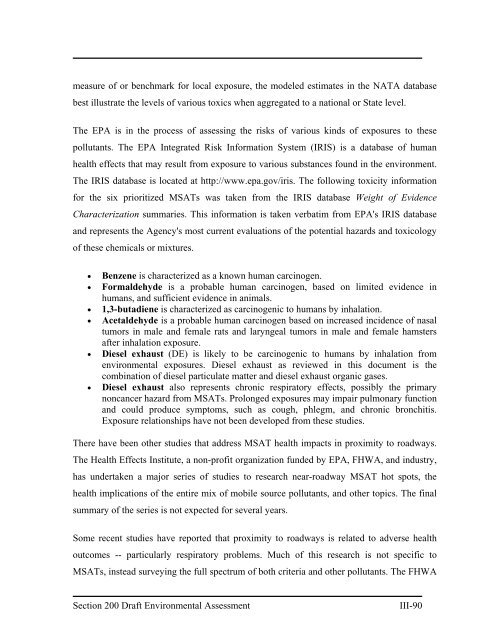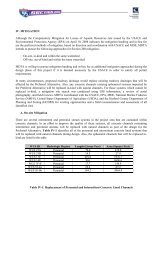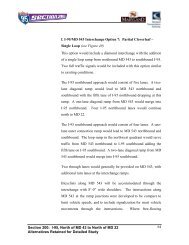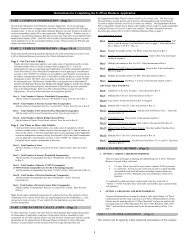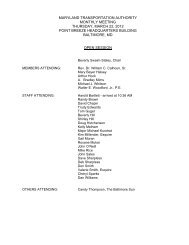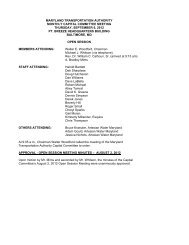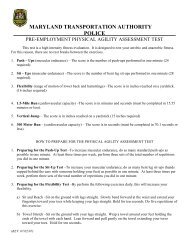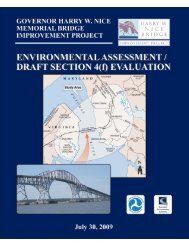Environmental Assessment - MdTA
Environmental Assessment - MdTA
Environmental Assessment - MdTA
You also want an ePaper? Increase the reach of your titles
YUMPU automatically turns print PDFs into web optimized ePapers that Google loves.
measure of or benchmark for local exposure, the modeled estimates in the NATA database<br />
best illustrate the levels of various toxics when aggregated to a national or State level.<br />
The EPA is in the process of assessing the risks of various kinds of exposures to these<br />
pollutants. The EPA Integrated Risk Information System (IRIS) is a database of human<br />
health effects that may result from exposure to various substances found in the environment.<br />
The IRIS database is located at http://www.epa.gov/iris. The following toxicity information<br />
for the six prioritized MSATs was taken from the IRIS database Weight of Evidence<br />
Characterization summaries. This information is taken verbatim from EPA's IRIS database<br />
and represents the Agency's most current evaluations of the potential hazards and toxicology<br />
of these chemicals or mixtures.<br />
• Benzene is characterized as a known human carcinogen.<br />
• Formaldehyde is a probable human carcinogen, based on limited evidence in<br />
humans, and sufficient evidence in animals.<br />
• 1,3-butadiene is characterized as carcinogenic to humans by inhalation.<br />
• Acetaldehyde is a probable human carcinogen based on increased incidence of nasal<br />
tumors in male and female rats and laryngeal tumors in male and female hamsters<br />
after inhalation exposure.<br />
• Diesel exhaust (DE) is likely to be carcinogenic to humans by inhalation from<br />
environmental exposures. Diesel exhaust as reviewed in this document is the<br />
combination of diesel particulate matter and diesel exhaust organic gases.<br />
• Diesel exhaust also represents chronic respiratory effects, possibly the primary<br />
noncancer hazard from MSATs. Prolonged exposures may impair pulmonary function<br />
and could produce symptoms, such as cough, phlegm, and chronic bronchitis.<br />
Exposure relationships have not been developed from these studies.<br />
There have been other studies that address MSAT health impacts in proximity to roadways.<br />
The Health Effects Institute, a non-profit organization funded by EPA, FHWA, and industry,<br />
has undertaken a major series of studies to research near-roadway MSAT hot spots, the<br />
health implications of the entire mix of mobile source pollutants, and other topics. The final<br />
summary of the series is not expected for several years.<br />
Some recent studies have reported that proximity to roadways is related to adverse health<br />
outcomes -- particularly respiratory problems. Much of this research is not specific to<br />
MSATs, instead surveying the full spectrum of both criteria and other pollutants. The FHWA<br />
Section 200 Draft <strong>Environmental</strong> <strong>Assessment</strong><br />
III-90


